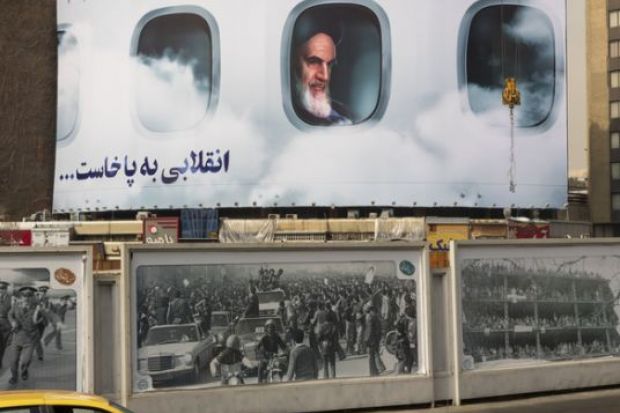Protests in Iran are showing no sign of letting up, with high-schoolers joining university students across the country in demanding regime change.
Their calls come despite authorities’ extreme measures to prevent mounting opposition.
On 2 October, state security forces attacked peaceful protesters at Sharif University, reportedly firing shotgun pellets and tear gas at students, according to local media.
Since the death of Mahsa Amini, an Iranian woman who died in custody more than two weeks ago for failing to comply with the regime’s dress code for women, dozens of students have been arrested, according to human rights groups.
Recent days have seen an escalation of protests, with many based out of university campuses – historic hotbeds for Iran’s revolutionary movement and more recent political opposition.
On 4 October, students at Mashhad University called for a referendum to change the country’s leadership.
“This isn’t a protest any more – it’s the start of a revolution,” they chanted.
“We’re all Mahsas! Fight us and we’ll fight back,” cried protesters at Allameh Tabataba’i University in Tehran on 5 October.
Recently, female high school pupils joined in civil disobedience, with photos appearing to show them posing in front of a chalkboard wearing their hair loose and eschewing the regime’s required hijab.
Jason Brodsky, policy director of United Against Nuclear Iran, a US-based non-profit organisation, told Times Higher Education that the opposition was gathering momentum.
“These protests are not going away,” he said. “Iran’s security apparatus will try to repress with all its might, but it cannot wipe out the underlying sentiment.
“Iran’s Generation Z is fed up – with oppression, denial of opportunity, economic stagnation, and not being able to live a normal life under the Khamenei revolutionary autocracy.”
While Iran’s president recently put on a confident facade, saying that Iran has been successful at thwarting past uprisings, there are signs the country’s leaders are beginning to show concern, he said.
“The response from Iran’s speaker of parliament a few days ago was telling – he is eyeing these protests warily, acknowledging in public that the protesters want regime change, not reform. He was also pleading with them not to destabilise the country,” said Mr Brodsky.
While he said there were “formidable obstacles” to any referendum under Iran’s current constitutional system, in which two-thirds of a parliament comprising “vetted legislators and trusted disciples of Iran’s supreme leader” would need to vote for a change, it’s clear Iran’s people are demanding change.
“The protesters are clearly showcasing the system is unreformable; they do not trust the Iranian leadership, and want to take power into their own hands,” he said.
Register to continue
Why register?
- Registration is free and only takes a moment
- Once registered, you can read 3 articles a month
- Sign up for our newsletter
Subscribe
Or subscribe for unlimited access to:
- Unlimited access to news, views, insights & reviews
- Digital editions
- Digital access to THE’s university and college rankings analysis
Already registered or a current subscriber? Login








